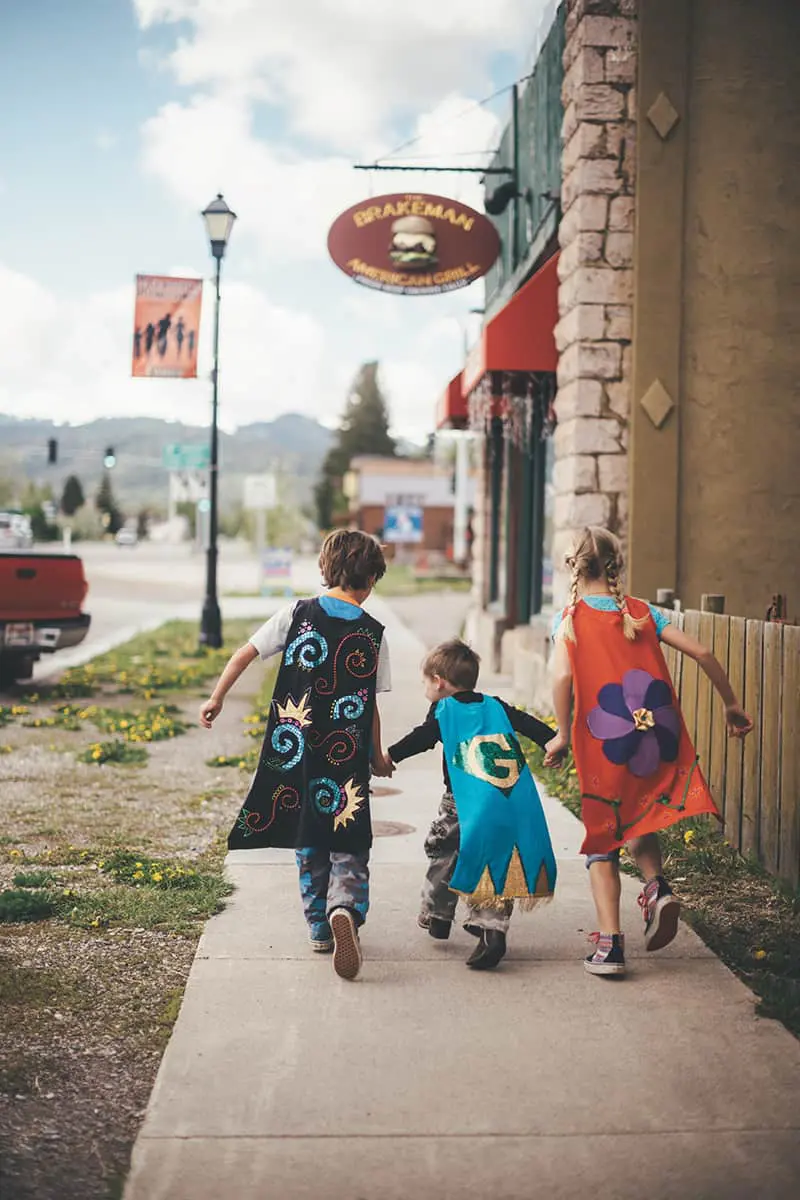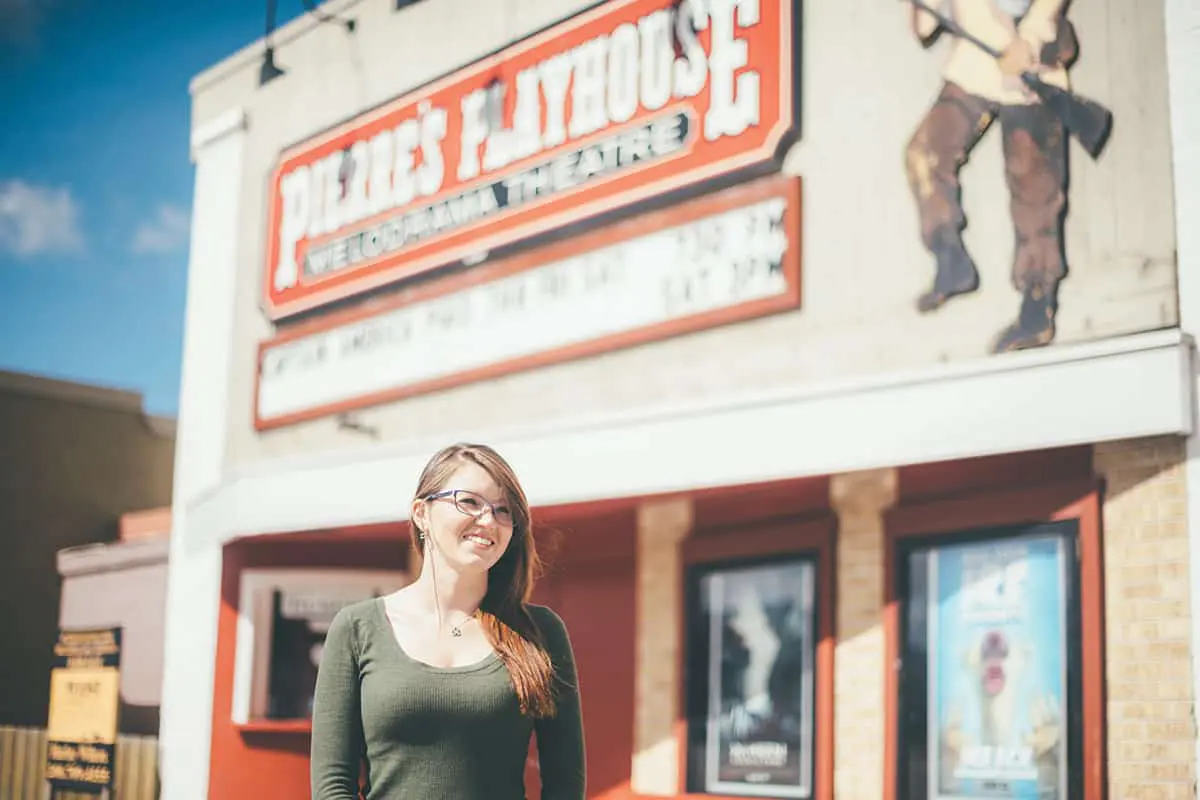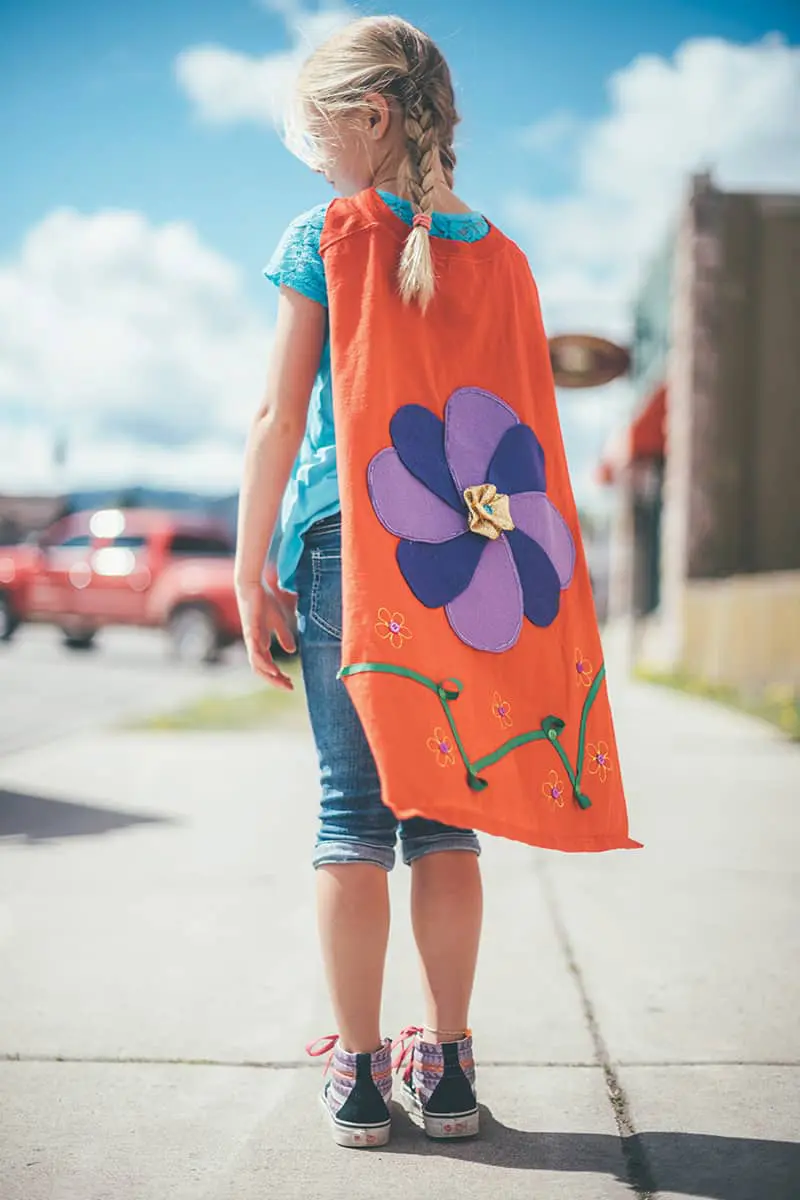By Andrea Swedberg // Photography by Camrin Dengel // Pattern by Chloë Brightman
–
“Hellooo, Mama! And welcome to ‘Gnomesville’!” says my nine-year-old daughter, clad in her seriously red, gingham-lined hooded cape, layered upon a polka-dot sweater and watermelon leggings. On top of her head rests a handmade red felt hat with a heart tassel.`
“In Gnomesville,” she carries on in her best English accent, “there is every type of gnome. I am a Baker Gnome.” And so it goes for about ten solid minutes. Her imagination continues to flow uninhibited, thought-for-thought, and I—very willingly—twirl myself up in her world; a world rich with the smell of fresh-baked cookies, crunchy fall leaves, and roaring bonfires.
This is the inherent ingredient of childhood: imagination. The make-believe. Children possess the natural ability to act out the personas that reside in their minds.
And the cape? Well, the cape gives them action.
Fall—and most specifically Halloween—lends itself to imagination and creativity. At this time of year, we find ourselves, as parents, mixing up the ingredients needed to foster imaginary worlds. With this in mind, I turned to Victor, Idaho, seamstress and costume designer Chloë Brightman for her thoughts on pretend play, creativity, and crafting a cape from household materials.
So, with the Halloween spirit looming in the rustling leaves, come with us to create a simple cape (instructions to follow) that will cloak your own little gnome or superhero.
Teton Family: How would you describe what you make, and where do you find inspiration?
Chloë Brightman: I like to take raw materials and turn them into something useful or beautiful. I love the process of turning a 2-D object (i.e., fabric) into something 3-D, with character and dimension. I start a project by identifying a need; then it often ends up encompassing more than originally planned. I can’t pinpoint any one source of inspiration … it comes from everywhere, really. Continually creating is my inspiration.
TF: When did you learn the art of needle and thread?
CB: My grandma taught me how to sew when I was about four. We started with doll blankets and clothing. She bought me my first sewing machine and over the years has given me immeasurable amounts of material and advice. She can sew anything! I still call her with sewing questions.
TF: Did you always want to create your own designs?
CB: At the age of two, I went to the doctor wearing a red sweatsuit and a turquoise tutu, paired with cowboy boots and a towel pinned around my neck (mandatory cape). In middle school, I would take thrift-store finds, cut them up, and sew them back together to create fun “Frankenstein” outfits. I remember calling my mom in college to tell her I had changed my major to costume design. Her response was, “Finally! I can’t believe you didn’t just start there.”
TF: Would you say that you make art or craft? Is there a difference?
CB: Some projects are craft, but others are art. Generally, items that I make multiples of would be considered craft. One-of-a-kind creations would be more in the art realm. “Art” or “craft” can depend on my mood and intention while creating that particular something.
TF: What percentage of your creations use recycled materials?
CB: I grew up in a house where reusing something was not a question. Then, I pursued a degree in theatre. Theatre is hugely underfunded, so budget is one of the main factors for deciding what is put on stage. Creativity is maximized since you need to create something from nothing.
TF: What is your thought on the idea of pretending?
CB: In theatre, we don’t consider it “pretend.” You are trained as a theatre student to get into character. Your practice is to actually “become” that person.
how to make a halloween cape from an old t-shirt
Materials:
T-shirt
Marker
Ruler
Scissors
Hot glue or spray glue
Fabric scraps (felt, ribbons, sequins, buttons, beads, iron-on interfacing, or other materials)
Steps:
1. Lay a T-shirt out on a table, flat and smooth, front side down.
2. With a ruler and marker, draw a slightly tapered line from each corner of the bottom hem to the shoulder seam, ending a couple of inches out from the neck hole.
3. Flip the T-shirt over. Starting from one of the lines that end on the shoulder seam, draw an arch just below the collar of the shirt, connecting it to the opposing line on the other shoulder seam.
4. Cut along the side lines and around the arched line to reveal a cape that can slip over your child’s head.
Decorate your cape:
1. Use spray glue, hot glue, or iron-on interfacing to attach other fabrics in the shape or color of your choice. Or—bust out your sewing skills!
2. Use buttons, beads, sequins, glitter-glue, sticky felt, or fabric paint to decorate the cape.
3. Alternately, use a shirt that already displays your child’s favorite superhero emblem.



